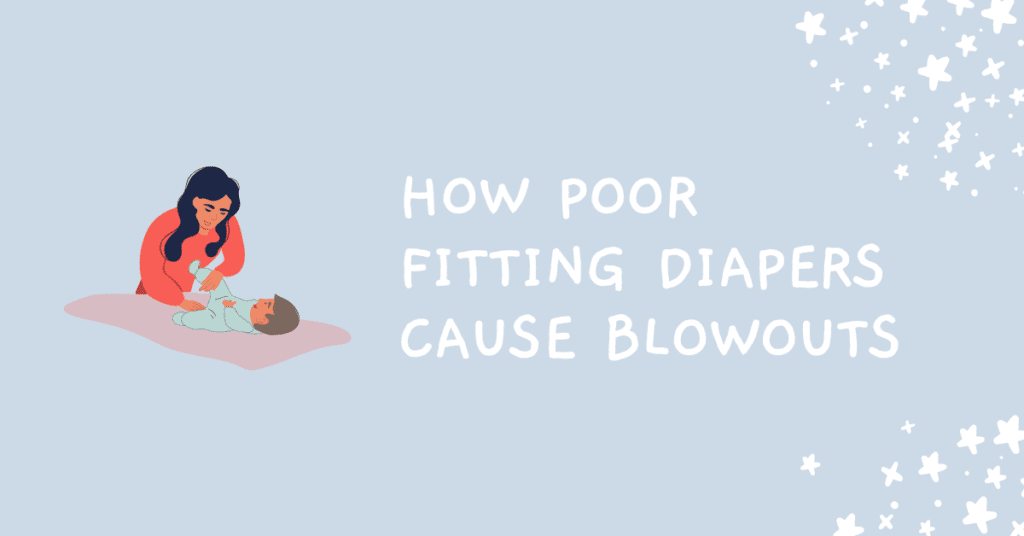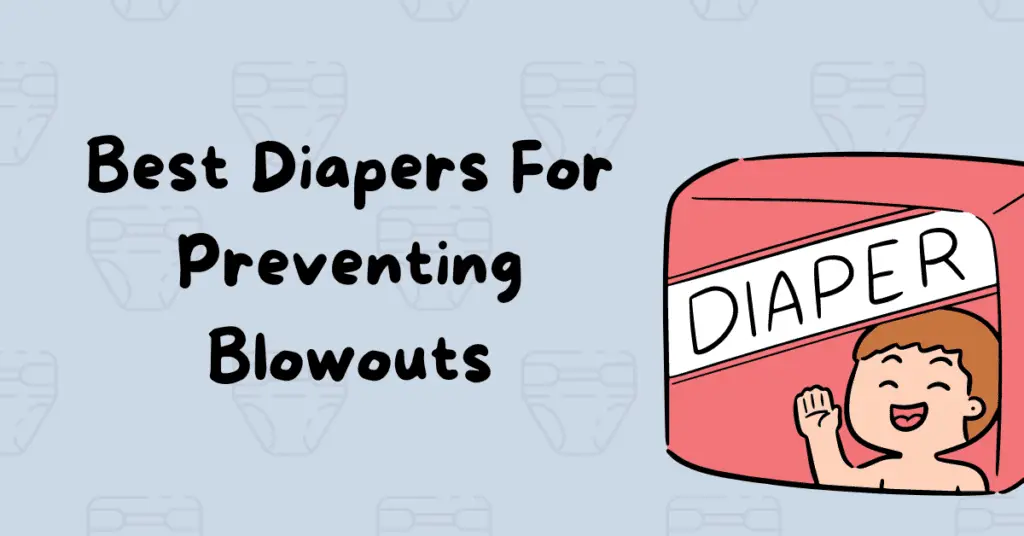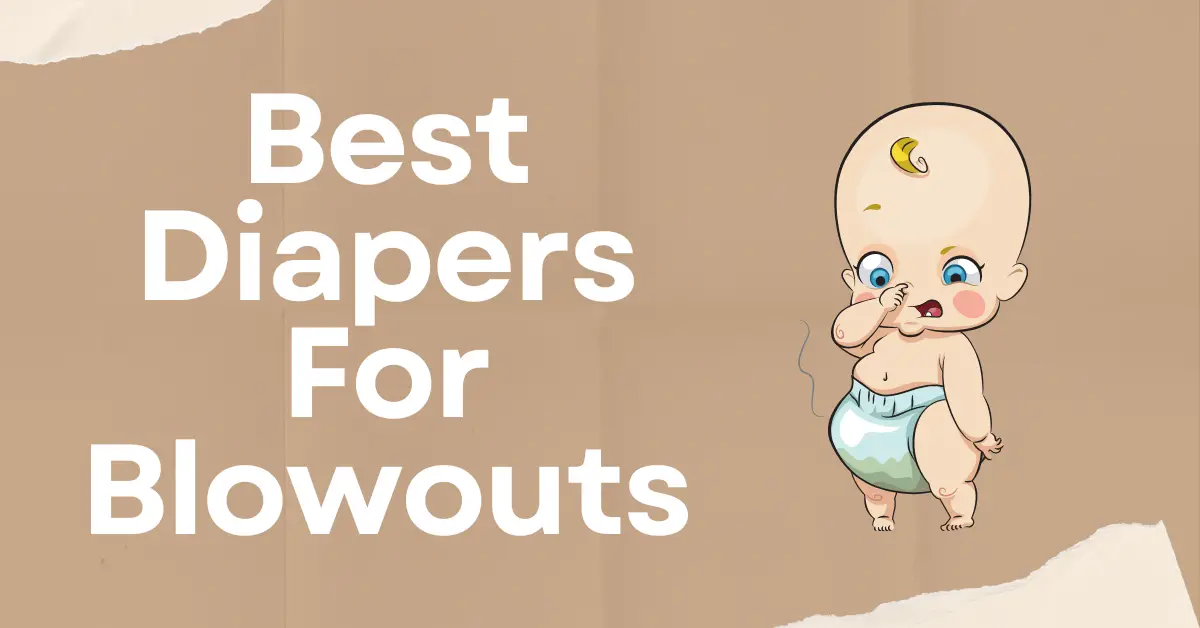A diaper blowout is a situation that every parent dreads, yet it’s an inevitable part of the parenting journey. It’s messy, inconvenient, and can happen at the most unexpected times. However, the best diaper for blowouts can make a significant difference in managing and even preventing these messy situations. This article aims to guide parents and caregivers through the process of choosing the best diapers to prevent blowouts, making life a little easier and a lot less messy. We’ll explore the causes of diaper blowouts, the factors to consider when choosing a diaper, and provide a review of some of the best diapers for preventing blowouts.
Understanding Diaper Blowouts
A diaper blowout, also known as a diaper leak, occurs when the contents of a baby’s diaper escape, usually up the back or out the sides, leading to a significant mess. This often happens when a diaper is too small, not put on correctly, or simply not absorbent enough to handle the volume of waste.
Diaper blowouts can be uncomfortable for babies and stressful for parents. For babies, blowouts can lead to skin irritation or diaper rash due to prolonged contact with waste. For parents, in addition to the extra cleaning and laundry, blowouts can cause stress, especially when they occur outside the home or during the night. Understanding the causes and impacts of diaper blowouts is the first step towards finding a solution.
Factors to Consider When Choosing Diapers to Prevent Blowouts
A. Size and fit
The size and fit of a diaper are crucial in preventing blowouts. A diaper that is too small or too large won’t provide a snug fit, making leaks more likely. Always refer to the weight guidelines provided by the diaper manufacturer.
B. Absorbency
The absorbency of a diaper is another critical factor. Diapers with high absorbency can handle more volume and are less likely to leak. Look for diapers with multiple layers of absorbent material.
C. Material quality
The quality of the material used in the diaper also plays a role. Soft, flexible materials are more comfortable for the baby and can provide a better fit, reducing the chances of a blowout.
D. Design features
Certain design features can help prevent blowouts. For example, diapers with elastic waistbands and double gussets can provide extra protection by creating a better seal around the baby’s waist and legs.
E. Baby’s age, weight, and diet
Lastly, consider your baby’s age, weight, and diet. These factors can influence the frequency and volume of bowel movements, which can affect the likelihood of blowouts. For example, a baby who is starting solid foods may have different diaper needs than a newborn.

How Poor Fitting Diapers Cause Blowouts
A poorly fitting diaper is one of the primary causes of diaper blowouts. Here’s how:
A. Size Issues
If a diaper is too small, it may not have enough capacity to hold the baby’s waste, leading to an overflow. On the other hand, a diaper that’s too big may not provide a snug fit around the baby’s waist and legs, allowing waste to escape. It’s essential to choose a diaper size based on your baby’s weight and adjust as they grow.
B. Incorrect Placement
Even a correctly sized diaper can cause blowouts if not put on properly. The diaper should be centred on the baby’s back, and the waistband should sit just below the belly button. The leg cuffs should wrap neatly around the legs without gaps, but not so tight as to cause discomfort.
C. Lack of Elastic Features
Diapers without elastic waistbands or leg cuffs may not provide a secure fit, making leaks more likely. Elastic features help the diaper conform to the baby’s body shape, creating a seal that can contain even the messiest blowouts.
D. Inadequate Absorbency
Finally, a diaper that doesn’t fit well may not make full use of its absorbent core. If the diaper doesn’t sit close to the baby’s body, urine and feces may not be effectively drawn into the absorbent material, leading to leaks.
In conclusion, a well-fitting diaper is crucial in preventing blowouts. Always ensure the diaper fits snugly, is correctly positioned, and has the necessary features to contain your baby’s waste effectively.

Best Diapers for Preventing Blowouts
Choosing the right diaper can significantly reduce the chances of experiencing a blowout. Here are some of the top diapers known for their blowout prevention:
Pampers Swaddlers
- Features: Pampers Swaddlers are known for their high absorbency and snug fit. They come with a wetness indicator and have a breathable outer cover to keep your baby comfortable.
- Pros: High absorbency, wetness indicator, breathable material
- Cons: May be more expensive than other brands
Huggies Little Snugglers
- Features: Huggies Little Snugglers offer diapers with double gussets and elastic waistbands, providing extra protection against blowouts. They also have a hypoallergenic inner lining for sensitive skin.
- Pros: Double gussets, elastic waistband, hypoallergenic
- Cons: Some parents report they run a bit small in size
Kirkland Signature Supreme
- Features: Kirkland Signature Supreme diapers are praised for their softness and flexibility, providing a comfortable fit for your baby. They also have a high-capacity absorbent core to handle larger volumes.
- Pros: Soft and flexible material, high-capacity absorbent core
- Cons: May not be as durable as other brands
Each of these brands has its strengths, and the best choice will depend on your baby’s specific needs and your personal preferences. Always remember to consider the factors discussed earlier when making your decision.
Tips for Preventing Diaper Blowouts
Even with the best diapers, blowouts can still occur. Here are some additional tips to help prevent them:
1. Proper Diaper Changing Techniques
Ensure that you’re changing the diaper correctly. The diaper should be snug but not too tight, with the waistband sitting just below the baby’s belly button. Make sure the leg cuffs wrap neatly around the legs without gaps.
2. Recognize When to Move Up a Diaper Size
If you’re experiencing frequent blowouts, it might be time to move up a diaper size. Signs that a diaper is too small include red marks on the skin from tight elastic, difficulty fastening the diaper, and of course, frequent leaks.
3. Regular Diaper Changes
Regular diaper changes can also help prevent blowouts. The longer a diaper is worn, the more saturated it becomes, increasing the likelihood of leaks. Aim to change your baby’s diaper every two to three hours or as soon as possible after a bowel movement.
4. Dress Baby in High-Waisted Pants
Dressing your baby in high-waisted pants can provide an extra layer of protection by helping to contain any leaks that do occur.
5. Try Different Brands
If you’re still experiencing frequent blowouts, don’t be afraid to try different brands. Every baby is unique, and what works best for one may not work as well for another.
Remember, while blowouts can be frustrating, they’re a normal part of the baby’s early years. With the right strategies, you can minimize their frequency and impact.
Final Thoughts On The Best Diapers for Blowouts
Choosing the right diaper to prevent blowouts is a crucial part of making the parenting journey a little less messy and a lot more manageable. By understanding the causes of diaper blowouts and considering factors such as size, fit, absorbency, and design features, you can make an informed decision about the best diaper for your baby. Brands like Pampers Swaddlers, Huggies Little Snugglers, and Kirkland Signature Supreme all offer unique features that can help in preventing blowouts. However, remember that every baby is unique, and what works for one might not work for another. Along with choosing the right diaper, implementing tips like proper diaper changing techniques, recognizing when to move up a diaper size, and regular diaper changes can further help in preventing blowouts. Here’s to fewer blowouts and more happy, clean moments with your little one!

